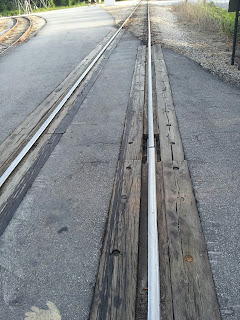This is going to be a bit of a "double entendre" post, although the message really is the same for me. With just over 6 weeks left before the Ride to Remember, it's important for me to remember that the goal is not to just "go fast", but I'm preparing for a big effort in an event situation. This means being smart about my training and avoid unneeded injury. At this point I'm not going to make any major jumps in fitness before RtR. I have to listen to my body, and not necessarily push through pain. While Jens Voigt is famously known for the saying "Shut up Legs", I need mine to tell me where I am.
Last month I took on a large increase in volume, as part of testing where I was fitness-wise for the Ride to Remember. My time in the saddle, as well as my mileage, ballooned well beyond what I had been doing previously this year. While I'm glad that I was able to complete several challenges, a first for me on Strava, it also came with a lot of risks. My knees already are a weak spot for me. By pushing myself above my previous training volume, I risked aggrevating old injuries on my patellar tendons. Typically it just means tendonitis, and being uncomfortable while riding for longer distances, or doing a lot of climbing. As a precaution, I'm following the "R.I.C.E." strategy (Rest, Ice, Compression, Elevation), minus compression. Stretching and quality time with my foam roller to keep everything limber will be on the schedule as well. I have two events this month that I'm intending to do (Ride 4 Animal Care, Bee Buzzin' Bicycle Tour), along with one last super long training ride scheduled for the end of the month.
 |
| Approaching SRT tracks |
The other side of not derailling my efforts is making smart decisions on the bike. This means not taking unnecessary risks, especially around railroad tracks. I learned the hard way late last year that tracks are not something to toy with. I was lucky that my injuries were minor, and I was able to ride away. If you talk to folks that have been riding for a while, a majority have stories to tell about railroad tracks. Works like "fracture" or "crack" are often used in combination with "clavical or hip". Just this spring I've had multiple friends end up off the bike for extended periods of time while their injuries heal. These are folks with tens of thousands of miles on the bike; I've riden with them on events like the Assault on Mt Mitchell. These aren't novice riders that didn't know how to handle tracks.
After my encounter, I felt like I had just been body slammed by a professional wrestler. One moment I was crossing the tracks, the next I was picking myself off the ground. There wasn't a moment of "I'm going to fall" or "oh this is going to hurt". Anything that happened between when my wheel caught the rail and I went down was done purely on instinct. I had to have landed on my right arm, as it was tender for several weeks afterwards. If I had more time, I probably would have had worse injuries, as I probably would have attempted to put my arm out to brace myself.
After my tumble I take a lot different attitude towards tracks: unless I'm confident that I have a good angle to cross (close to, if not, perpendicular), and the conditions are good, I'll unclip and cross with one foot on the ground. Folks probably think I'm out of my mind when I reach the tracks on the Swamp Rabbit, but I unclip every time I cross those. The angle is poor, and the spacers are wooden (and thus have a chance to be rotten). The honest truth is this - I've been on an almost constant training routine for almost 3 years now, between just getting into shape and preparing for various rides. I don't need to take the risk that today is the day that the tracks are a little bit slippery, or my judgement is off on what angle is going to get my wheels safely over the gaps. No Strava segment, or draft advantage in a group ride, is worth being sidelined waiting for bones to mend.





This can apply to so many parts of life!
ReplyDelete